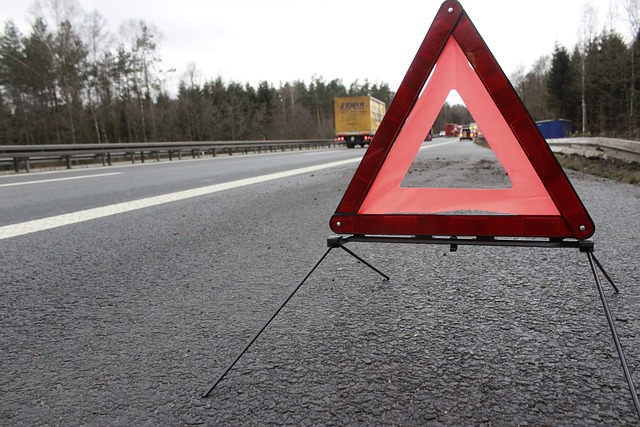Driving is an everyday activity for many people, and while it may seem routine, it is not without its hazards. Understanding common road hazards and knowing how to handle them is essential for maintaining your safety and that of others. This article will explore some of the most common road hazards and provide practical tips on navigating them effectively.
Vagabondish is reader-supported. When you buy through links on our site, we may earn a small affiliate commission. Read our disclosure.
Road Debris and Obstacles
Road debris and obstacles pose significant risks to drivers, as they can cause tire damage, loss of control, or collisions. Stay alert and scan the road ahead. Continuously monitor the road for debris, potholes, or objects that may pose a risk. This allows you to anticipate and react promptly. For instance, if you see a large vehicle carrier transporting multiple cars, it is better to maintain a safe distance and be prepared for potential debris falling from the vehicles. Seasoned drivers from the Road Runner vehicle transport company suggest leaving enough space between your car and the truck in front to give you ample time to react and maneuver around any obstacles. If you encounter debris or obstacles, avoid sudden swerving or braking, which may lead to losing control. Instead, gradually reduce speed and change lanes if it is safe. If you notice significant road debris or hazards, consider reporting them to the appropriate authorities to prevent potential accidents for other drivers.
Construction Zones
Navigating construction zones can be challenging due to lane closures, reduced speed limits, and changing road conditions. Be aware of signage and follow instructions. Pay close attention to signs indicating lane closures, detours, or reduced speed limits. Follow the instructions provided by road workers or traffic control devices. Reduce speed and be patient. Slow down and exercise patience when driving through construction zones. Expect delays and allow extra time for your journey. If a lane closure is approaching, merge into the appropriate lane well in advance and merge smoothly without cutting off other drivers. Observe road workers and equipment: Be mindful of road workers and construction equipment. Give them ample space and be prepared for unexpected movements or actions.
Inadequate Signage
Inadequate signage on the road can create confusion, increase the risk of wrong turns, and lead to potentially dangerous situations. When encountering inadequate signage, drivers should take extra care to navigate safely. When faced with unclear or missing signs, it’s crucial to remain attentive and scan the road for alternative signs or markers. Pay attention to other drivers’ behavior and follow the traffic flow cautiously. Utilize GPS or navigation systems to supplement inadequate signage. These tools can provide real-time directions and help you navigate accurately, especially in unfamiliar areas.
Poor Weather Conditions
One of the most significant challenges drivers face is adverse weather conditions. Rain, snow, fog, and ice can significantly impact visibility and vehicle control. To navigate these hazards safely:
- Reduce your speed.
- Slow down and maintain a safe following distance to allow for increased stopping distances on wet or slippery roads.
- Turn on your headlights to increase visibility, especially during heavy rain or snow.
- Ensure your windshield wipers are in good condition to clear the windshield effectively. If you encounter icy conditions, drive slowly and avoid sudden acceleration, braking, or steering movements.
- Increase your following distance to allow for more reaction time.
When experiencing fog, use your vehicle’s defogging mechanisms or air conditioning to clear the windshield. Be cautious and reduce speed, as visibility may be severely limited.
Wildlife Crossing
Wildlife crossing presents a unique road hazard, especially in areas near forests, rural regions, or near bodies of water. Animals such as deer, elk, or smaller mammals may unexpectedly venture onto the road, increasing the risk of collisions. Be vigilant and watch for any signs indicating wildlife crossings. Pay attention to the sides of the road and any movement or reflections that may show animals nearby. Slow down when entering areas prone to wildlife crossings. Lower your speed to give yourself more time to react if an animal suddenly appears. Use your high beams at night to improve visibility, but avoid blinding other drivers.
Aggressive and Distracted Drivers
Sharing the road with aggressive or distracted drivers can be extremely challenging and dangerous. Stay calm and maintain your composure. Avoid engaging in confrontations with aggressive drivers. Stay focused on your safety and let aggressive drivers pass if necessary. Maintain a safe following distance from aggressive drivers to allow for sudden braking or maneuvers on their part. Ensure that you are not contributing to the problem by driving distracted. Focus on the road and avoid texting, eating, or adjusting the radio while driving. Use defensive driving techniques. Be prepared for unexpected actions from other drivers. Anticipate their movements and maintain an escape route if needed.

Navigating road hazards requires attentiveness, preparedness, and the ability to adapt to changing circumstances. By understanding common challenges, you can take proactive measures to ensure your safety and that of others on the road. Stay alert, maintain a safe following distance, adapt your driving to the conditions, and practice defensive driving techniques. By doing so, you can confidently navigate road hazards and arrive at your destination safely.


